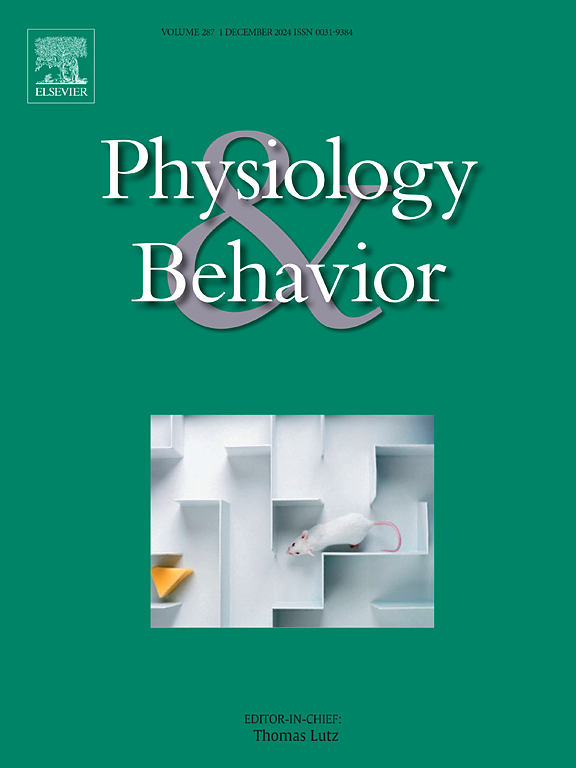Exercise intensity of virtual reality exergaming modulates the responses to executive function and affective response in sedentary young adults: A randomized, controlled crossover feasibility study
IF 2.4
3区 医学
Q2 BEHAVIORAL SCIENCES
引用次数: 0
Abstract
Virtual reality (VR) exergaming is a novel strategy to encourage physical activity and boost emotional well-being. However, its effects on executive function (EF) are not fully understood. This study assessed the immediate and retention effects of immersive VR exergaming, at varying exercise intensities, on EF and affect among sedentary college students. Thirty participants (mean age = 22.2 ± 2.5 years; 18 females) underwent 15-minute sessions of moderate-intensity (MI), high-intensity (HI), and active-control intensity (AC) VR exergaming in a counterbalanced order. EF was evaluated using the Flanker, Task-switching, and N-back tasks before, immediately after, and 30 min post-intervention. Emotional valence and arousal were measured by the Feeling Scale and Felt Arousal Scale, respectively. The inverse efficiency score (IES) results indicated that inhibitory control was higher following both MI and HI exergaming compared to AC (p < 0.05), with improvements sustained for 30 minutes HI VR exergaming showed the greatest improvement (p = 0.048). Both HI and MI also exhibited higher working memory capacity than AC (p < 0.05), with HI performing better (p = 0.039). No significant differences in task-switching performance were observed among the groups (p > 0.05). Emotional valence and arousal were significantly elevated immediately after and sustained for 30 minutes following MI and HI exergaming (p < 0.05). This study demonstrates the cognitive and affective benefits of MI and HI VR exergaming in young adults, with HI VR exergaming showing longer-lasting improvements. These findings suggest that immersive VR exergaming can enhance both physical and cognitive health, potentially improving academic performance and daily functionality in collegiate populations.
虚拟现实游戏的运动强度可调节久坐不动的年轻人的执行功能和情感反应:一项随机对照交叉可行性研究。
虚拟现实(VR)益智游戏是一种鼓励体育锻炼和提高情绪健康的新策略。然而,人们对其对执行功能(EF)的影响还不完全了解。本研究评估了不同运动强度的沉浸式 VR 电子游戏对久坐不动的大学生的执行功能和情感的即时和持续影响。30名参与者(平均年龄为22.2±2.5岁;18名女性)按照平衡顺序分别接受了15分钟的中等强度(MI)、高强度(HI)和主动控制强度(AC)VR游戏。在干预前、干预后和干预后30分钟内,分别使用侧翼任务、任务切换和N-back任务对EF进行评估。情绪价值和唤醒分别通过感觉量表和感觉唤醒量表进行测量。反向效率评分(IES)结果表明,与 AC 相比,MI 和 HI 外部游戏后的抑制控制能力更高(P < 0.05),并且这种改善持续了 30 分钟。HI VR 发力游戏的改善幅度最大(p = 0.048)。HI 和 MI 的工作记忆能力也高于 AC(p < 0.05),其中 HI 表现更好(p = 0.039)。各组之间的任务切换能力没有明显差异(p > 0.05)。在进行 MI 和 HI 外部游戏后,情绪价值和唤醒度立即明显升高,并持续 30 分钟(p < 0.05)。这项研究表明,MI 和 HI VR 外部游戏对年轻人的认知和情感都有益处,其中 HI VR 外部游戏的改善效果更为持久。这些研究结果表明,沉浸式 VR 外部游戏可以增强体质和认知健康,从而提高大学生的学习成绩和日常功能。
本文章由计算机程序翻译,如有差异,请以英文原文为准。
求助全文
约1分钟内获得全文
求助全文
来源期刊

Physiology & Behavior
医学-行为科学
CiteScore
5.70
自引率
3.40%
发文量
274
审稿时长
47 days
期刊介绍:
Physiology & Behavior is aimed at the causal physiological mechanisms of behavior and its modulation by environmental factors. The journal invites original reports in the broad area of behavioral and cognitive neuroscience, in which at least one variable is physiological and the primary emphasis and theoretical context are behavioral. The range of subjects includes behavioral neuroendocrinology, psychoneuroimmunology, learning and memory, ingestion, social behavior, and studies related to the mechanisms of psychopathology. Contemporary reviews and theoretical articles are welcomed and the Editors invite such proposals from interested authors.
 求助内容:
求助内容: 应助结果提醒方式:
应助结果提醒方式:


